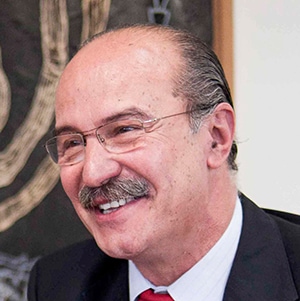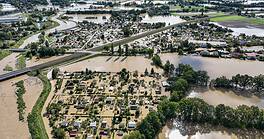Alberto Grana, president of the Central Bank of Uruguay, discusses how the country is ensuring its long-term economic growth in the face of external pressures.

Global Finance: What is your view on the Uruguay’s economic outlook for the rest of this year and into 2020?
Alberto Grana: Uruguay is experiencing a combination of factors that–although expected to improve growth in the long run–are unlikely to fully surface in the short term. The weight of regional and global volatility will result in low but positive growth for the rest of 2019. Long-term growth prospects have improved recently since the signing of free-trade agreements between Mercosur [Southern Common Market] and the European Union and EFTA [European Free Trade Association]. The recent signing of the agreement with UPM to set up a new paper pulp processing plant, which represents an investment of nearly 7% of GDP over the next six years, will also generate an increase in both investment and GDP starting in 2020. Our real exchange rate has been adjusting during the past year, enhancing growth prospects in the medium term. Nevertheless, the global and regional slowdown generated by the trade wars and political problems in the region are expected to dampen growth during 2019.
GF: What is your view on the economy of Latin America for this year and next?
Grana: Owing to a challenging global macroeconomic outlook, growth in Latin America has been slowing down, though not at a uniform pace. Interest rates have started to come down recently, but international financial conditions are less favorable than they were prior to 2013. Commodity prices are recovering, but they are far from their peaks in 2012. At the same time, growth in the rest of the world has slowed, and the prospects for developed countries in 2020 have dimmed due to growing political uncertainty related to key issues, like global trade. Against this backdrop, the performance of Latin American economies has been uneven.
GF: What keeps you up at night, in terms of the main economic and financial risks at home and abroad? What measures might address those?
Grana: External risks are always important for a small, open economy, particularly in a global and regional environment like the one Uruguay lives in. We feel that we have the tools to cope with them. As I mentioned, we live in a particularly volatile world characterized by very low interest rates, high political uncertainty and huge swings in risk appetite by globalized investors, which results in large shocks to the region. Nevertheless, and as a corollary to our experience, Uruguay has built a set of strengths that will enable us to deal with potential shocks in the years to come.
First and foremost, and in stark contrast with a long history of fixed exchange-rate regimes, Uruguay has now a floating exchange-rate system that allows us to mitigate the impact of external shocks. Uruguay has also virtually eliminated the exchange-rate mismatches it used to have, not only on the government balance sheets but also for the banking system and domestic firms. We have sound management of public debt, which not only has reduced its dollarization, but also lengthened the maturity of debt to close to five years.
Our financial system is well capitalized, with capital ratios double the minimum required, and has rather healthy liquidity ratios; more than half of short-term liabilities are invested in very liquid short-term assets. On top of that, we have strong international reserves that reach close to 25% of GDP. We also have strong institutions, a stable political system and social cohesion. All these factors are behind the investment-grade rating Uruguay has earned and sustained during the past seven years.
Internal risks are historically quite small compared to external risks. However, one of the permanent challenges in macroeconomic management is to ensure the sustainability of public accounts. In that sense, Uruguay maintains a mature political system with the capacity to process the necessary changes to ensure fiscal sustainability and long-term growth. In the short term, monetary policy has been set in a moderately contractive position, in order to evaluate the phase of the cycle the Uruguayan economy is going through. We will use all the nominal flexibility at our disposal to stabilize shocks, while ensuring the anchoring of long-term inflation expectations.



